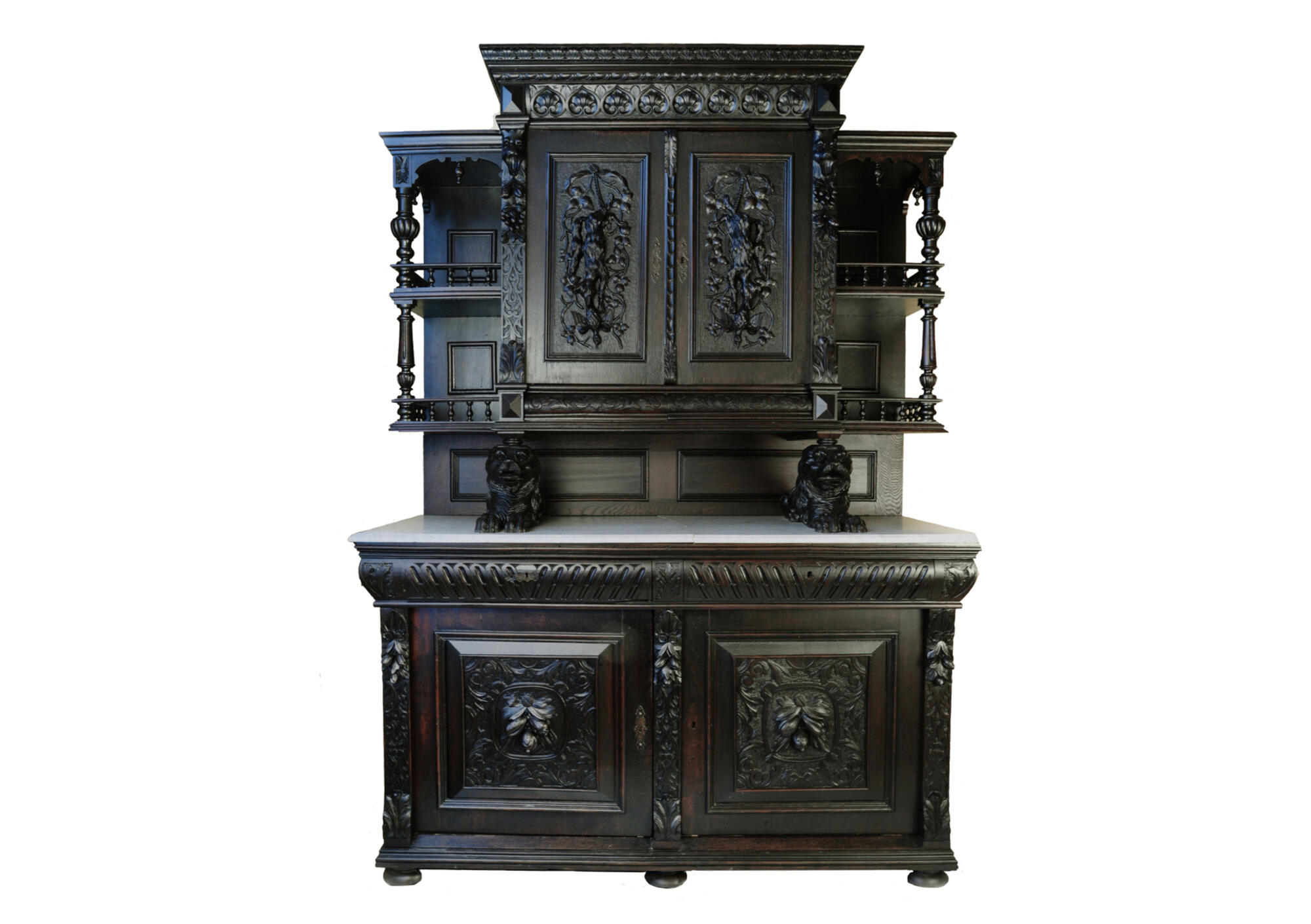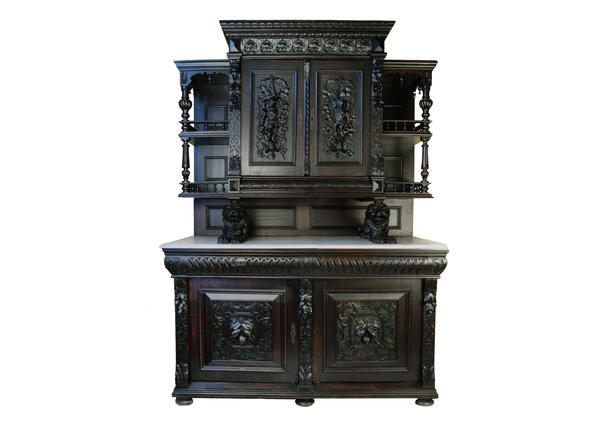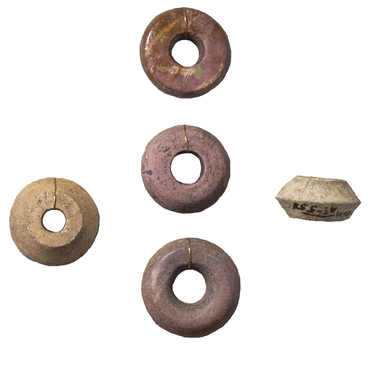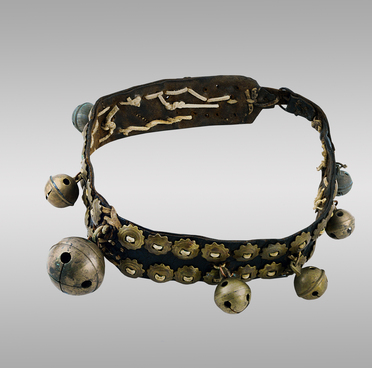A buffet is a sideboard used for storing food, tableware, and cutlery.
The first buffets made their appearance in the Middle Ages, and modern-like models were first produced by French factories in the 17th century. This furniture turned out to be so well designed that it has barely changed to this day.
Old buffets consisted of two parts: a cabinet with swing doors, drawers placed above it, and a cupboard with or without glazed doors, installed low-level above the cabinet.
The upper part shelves were behind glass doors that could be locked with a key. There, fragile and expensive crystal-glass ware, wine bottles, and vases with fruit were stored. Cutlery was placed in drawers, and a closed compartment at the very bottom of the buffet was intended for massive porcelain ware: dishes, cups, or teapots.
A tabletop with a niche, which was used for serving cold dishes, divided the lower and upper parts of the buffet. Therefore, over time, the word ‘buffet’ had another meaning — a place where you can have a light meal. And, in the 18th century, not only a piece of furniture but also a room in which it was located was called a buffet room. Usually, it was located next to the kitchen and ready-made cold dishes and drinks were kept in it.
Over time, a buffet became a symbol of the family’s prosperity. Buffets were made of natural valuable wood species: oak, ash, and beech. Such wood products were resistant to fading and temperature changes and had a longer service life. The buffets were often painted in dark or bright colors, and light shades were rarely used.
Buffets were decorated with special thin plywood boards inserted into a frame. They were decorated with symmetrical figures of angels or flowers in pots. On the smooth surfaces of the buffet, urban landscapes, buildings, ladies in magnificent dresses or ornaments were depicted. One of the most common decorations was wood carvings of geometric and floral patterns.
The first buffets made their appearance in the Middle Ages, and modern-like models were first produced by French factories in the 17th century. This furniture turned out to be so well designed that it has barely changed to this day.
Old buffets consisted of two parts: a cabinet with swing doors, drawers placed above it, and a cupboard with or without glazed doors, installed low-level above the cabinet.
The upper part shelves were behind glass doors that could be locked with a key. There, fragile and expensive crystal-glass ware, wine bottles, and vases with fruit were stored. Cutlery was placed in drawers, and a closed compartment at the very bottom of the buffet was intended for massive porcelain ware: dishes, cups, or teapots.
A tabletop with a niche, which was used for serving cold dishes, divided the lower and upper parts of the buffet. Therefore, over time, the word ‘buffet’ had another meaning — a place where you can have a light meal. And, in the 18th century, not only a piece of furniture but also a room in which it was located was called a buffet room. Usually, it was located next to the kitchen and ready-made cold dishes and drinks were kept in it.
In Russia, buffets became popular in the 19th century. Low and oblong cabinets were placed in the dining room to store everyday use dinnerware. Corner buffets also made an appearance, which later in Russia were called ‘gorka’ [‘mountain’ from Russian].
Over time, a buffet became a symbol of the family’s prosperity. Buffets were made of natural valuable wood species: oak, ash, and beech. Such wood products were resistant to fading and temperature changes and had a longer service life. The buffets were often painted in dark or bright colors, and light shades were rarely used.
Buffets were decorated with special thin plywood boards inserted into a frame. They were decorated with symmetrical figures of angels or flowers in pots. On the smooth surfaces of the buffet, urban landscapes, buildings, ladies in magnificent dresses or ornaments were depicted. One of the most common decorations was wood carvings of geometric and floral patterns.



